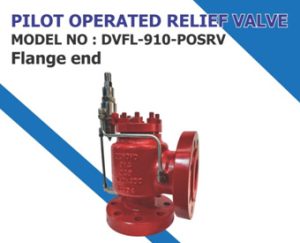Modulating Pilot Operated Safety Relief Valve in India
A Spring Operated Safety Valve is a common pressure relief device that is intended to open at a predefined pressure and relieve pressure from a vessel or system in order to protect it against excessive pressure. The spring-loaded safety valve is depicted at its best. Six components make up the majority of it: the valve body, bonnet, nozzle, adjustment ring, moveable valve disc, and compressible spring. A force balance underlies the spring-loaded PSV’s functioning. The disc experiences a downward pull as a result of the pressure at the intake being lower than the predetermined pressure, and it continues to be seated on the nozzle in the closed position.
It is crucial to realize that the operating pressure of the protected equipment should always be lower than the valve’s reseating pressure. To properly reseat the valve and regain excellent seat tightness, most manufacturers, codes, and standards advise a difference of 3 to 5% between the reseating pressure and operating pressure.
Many applications employ a spring-loaded relief valve to prevent over-pressurizing pipelines, containers, and vessels. Examples of spring-loaded relief valves are conventional and balanced bellows valves. These relief valves must be sized to have a relieving capacity adequate to protect the integrity of the system by preventing the internal pressure from rising over the design limitations, according to codes and standards like ASME, API, and ISO (to mention a few). Typically, the relief system designer chooses and designs the relief valve to fulfill process engineering requirements.
Technical Data:
Design according to: API-521, API-520, Technical according to: API 526 Testing standards: API 527, PTC 25
Manufacturing, testing and labeling meets the requirements of ASME B 16.5, ASME VIII, API 526, API 520, API 527 and IBR rules.
Sizes: 1″x 2″ to 8″ x 10″
End connection: Flange end 150#, 300#, 600#


